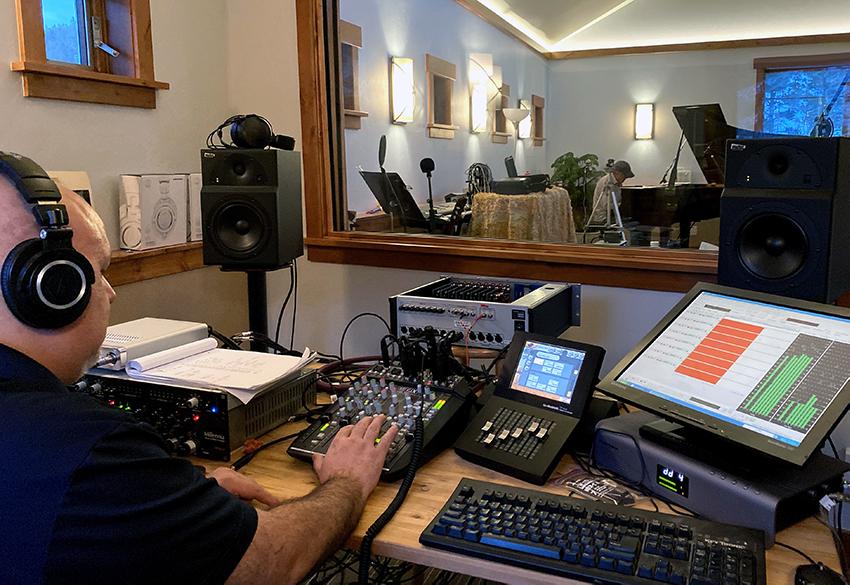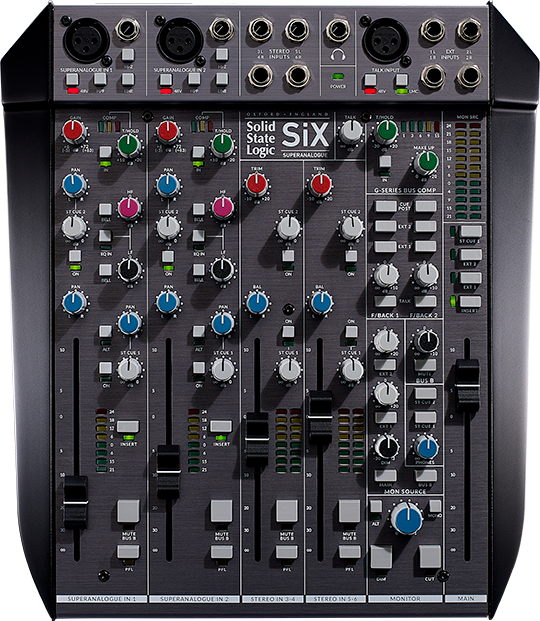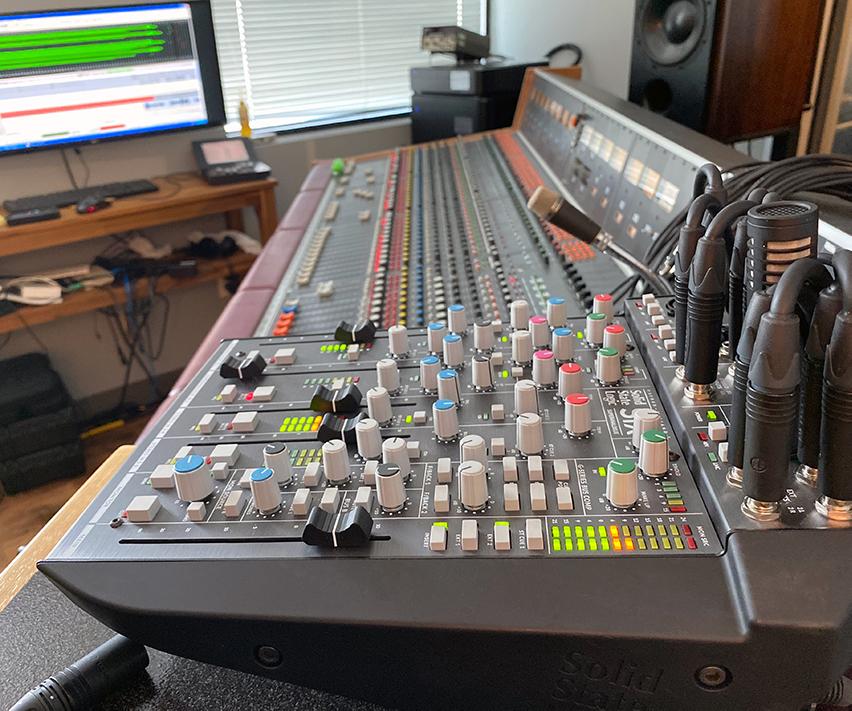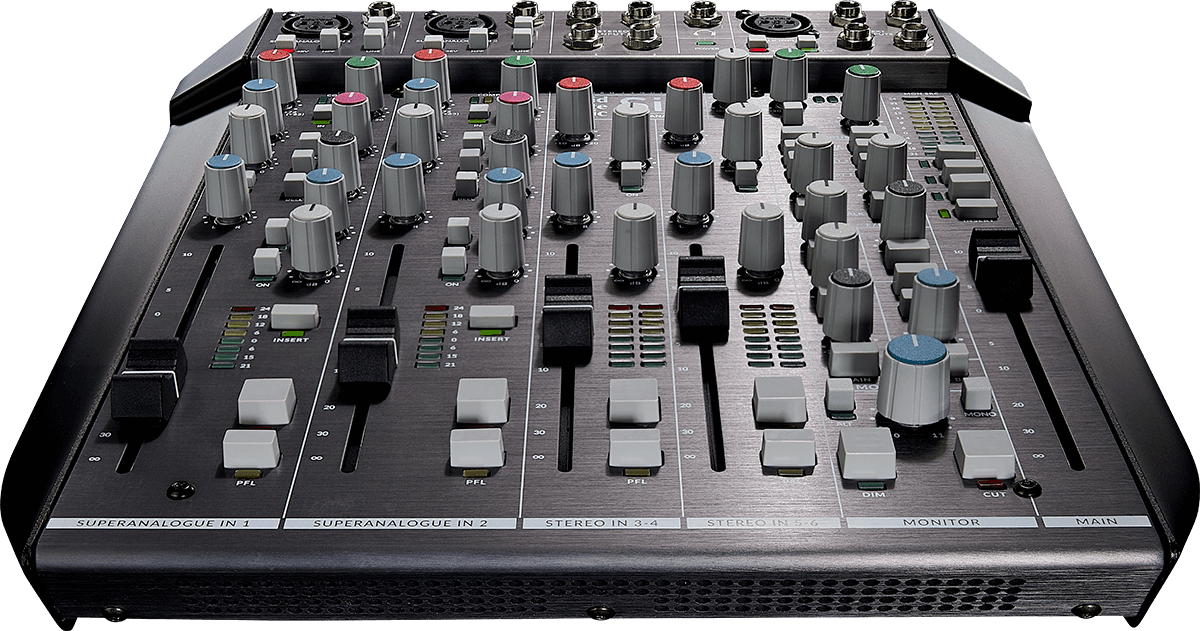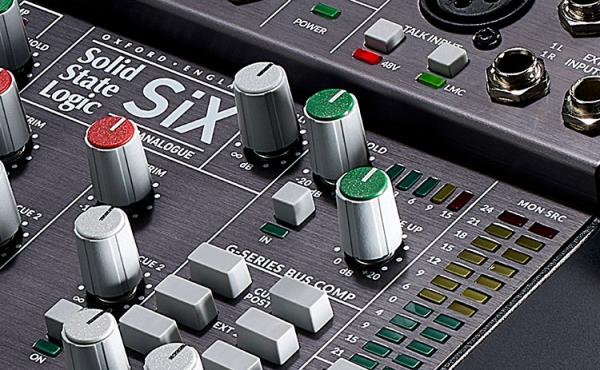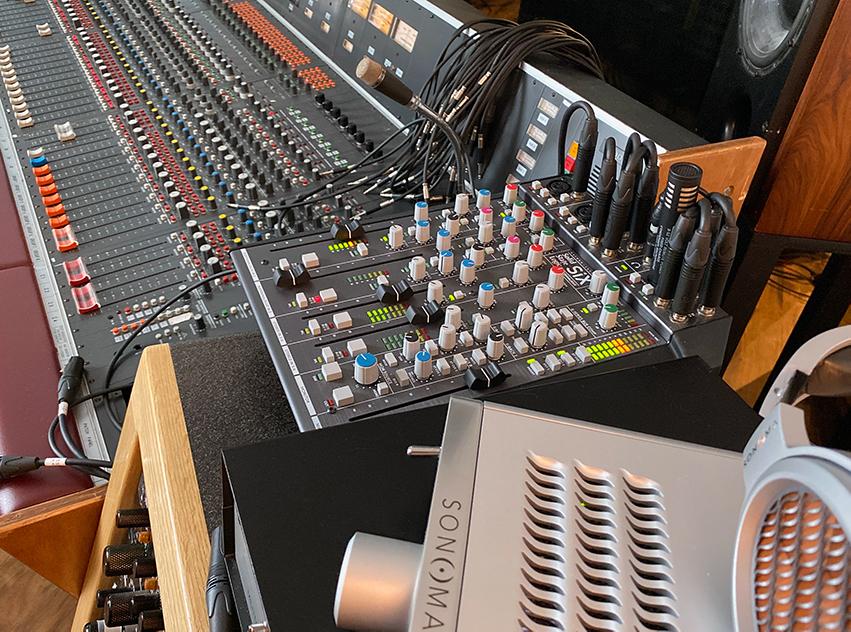The SiX may be the smallest standalone mixer that SSL has produced, but its performance, price and feature set made it ideal for the application and the project, according to Friedrich. “That little mixer sounded really, really good; I was stunned how good it sounded. It’s a very short signal path and when we ran stuff through it, it was very neutral. It’s also incredibly flexible; we had almost endless possibilities to route inputs and signals.”
Recording live to two-track is a little more challenging and requires more equipment than simply tracking to a recorder and mixing the sessions later, says Friedrich. “But the reality is that live-to-two-track eliminates that one step and brings you closer to the actual performance, in my opinion.”
The SSL SiX was also a more practical solution since it is much more compact than Friedrich’s alternative, a choice of vintage mixing consoles from his own collection. “I was worried about shipping them, because they’re heavy and they could get damaged,” he says.
For the Out of Thin Air recordings, Friedrich reports, the main piano microphones were Sanken CO-100K condensers, which have a frequency response of 20 Hz to 100 kHz, with short cable runs to Forssell Technologies SMP-2 preamplifiers. The room pickup was an AEA R88 stereo ribbon microphone paired with an Integer Audio RMP2 preamp (the project will also be available in a surround mix).
“I also mastered it as I was mixing because I didn’t want to go through another stage of processing,” says Friedrich, who had a TC Electronic System 6000 reverb and a Millennia NSEQ-2 equalizer available. “The Maselec MPL-2 peak limiter was there as a security measure, but I don’t think I even tickled it. Though solo piano can be tricky to record, if I can’t mix a solo piano live to two-track recording after doing it so many times in my career, there must be something wrong with me,” he laughs. Friedrich said he looks forward to making more recordings using the SIX.
Skinas bought the SSL SiX sight unseen following Friedrich’s recommendation. “He said, ‘We should try one of these.’ I just bought it to try it,” he says. He had no qualms about the purchase, though, having had a relationship with SSL since the early days of the company. “Years ago, in the ‘70s, I went to see an SSL console before there were any in this country. So I knew this console would be good. And it is good!”.

